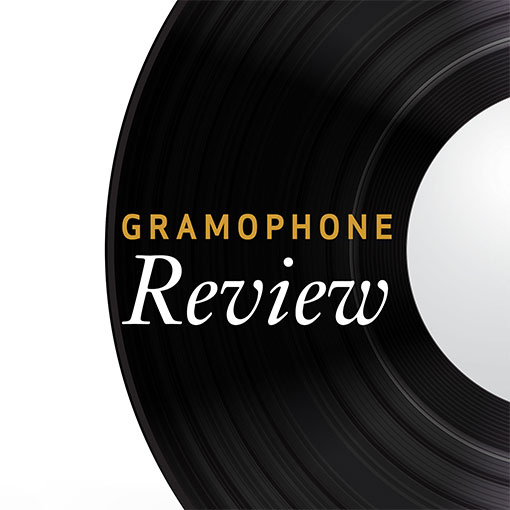20th Century Wind Music
View record and artist detailsRecord and Artist Details
Composer or Director: Benjamin Britten, Toru Takemitsu, Arthur Honegger, Edison (Vasil'yevich) Denisov, Claude Debussy
Label: Philips
Magazine Review Date: 12/1994
Media Format: CD or Download
Media Runtime: 64
Mastering:
DDD
Catalogue Number: 442 012-2PH

Tracks:
| Composition | Artist Credit |
|---|---|
| Petite Suite |
Arthur Honegger, Composer
Arthur Honegger, Composer Aurèle Nicolet, Flute Naoko Yoshino, Harp Nobuko Imai, Viola |
| Duo for Flute and Viola |
Edison (Vasil'yevich) Denisov, Composer
Aurèle Nicolet, Flute Edison (Vasil'yevich) Denisov, Composer Nobuko Imai, Viola |
| Toward the Sea III |
Toru Takemitsu, Composer
Aurèle Nicolet, Flute Naoko Yoshino, Harp Nobuko Imai, Viola Toru Takemitsu, Composer |
| And then I knew 'twas Wind |
Toru Takemitsu, Composer
Aurèle Nicolet, Flute Naoko Yoshino, Harp Nobuko Imai, Viola Toru Takemitsu, Composer |
| Lachrymae |
Benjamin Britten, Composer
Benjamin Britten, Composer Naoko Yoshino, Harp Nobuko Imai, Viola |
| Sonata for Flute, Viola and Harp |
Claude Debussy, Composer
Aurèle Nicolet, Flute Claude Debussy, Composer Naoko Yoshino, Harp Nobuko Imai, Viola |
Author: Michael Stewart
The combination of flute, viola and harp has not been exactly over-employed since Debussy composed his Sonata of 1916, so programme building around this particular work can sometimes be a little awkward to say the least. However, here is an imaginative and attractive collection of pieces that use various duo combinations of the ensemble or, as is the case in the works by Takemitsu, pieces that have been composed with Debussy's instrumental texture specifically in mind.
Honegger's tiny, three-movement Petite Suite lasts no longer than 2'31'', yet despite its brevity is perfectly formed in every respect. The scoring is flexible; Honegger asks simply for two melody instruments (flutes, oboes, violins or recorders are suggested) with piano. Here, the piano part is successfully taken by the harp and the melodic lines by flute and viola. Edison Denisov is generally known for his use of aleatoric techniques and unconventional textures, but his Duo for flute and viola establishes a strange and haunting atmosphere by traditional musical means, the resulting sound-world is not unlike that of Villa-Lobos's Bachianas brasileiras No. 6 for flute and bassoon.
The surprise item of the disc is Britten's Lachrymae, though I hasten to add that it actually works exceedingly well in the context of the other items. Having heard it several times now, I must say that I rather prefer the harp to the piano in this piece; atmosphere is greatly enhanced and the pairing of viola and harp seems utterly natural considering the Elizabethan roots of the thematic material. The two Takemitsu works find the composer in his most sensuous and impressionistic mood. Personally I find the version of Toward the Sea III heard here far more successful than its first incarnation for alto flute and guitar, which, judging from the recording made by John Williams and Sebastian Bell (Sony Classical, 1/92), sounds rather pale and insipid with guitar instead of harp. The influence of Debussy, both here and inAnd then I knew 'twas wind, is particularly strong, with the latter even quoting from the opening harp arabesque of the Debussy Sonata. Takemitsu devotees, I feel, will not be disappointed.
The performances throughout are uniformly excellent—as one would expect with such fine artists as Aurele Nicolet and Nobuko Imai at the helm—and the atmospheric, well-balanced recording complements the repertoire perfectly.'
Honegger's tiny, three-movement Petite Suite lasts no longer than 2'31'', yet despite its brevity is perfectly formed in every respect. The scoring is flexible; Honegger asks simply for two melody instruments (flutes, oboes, violins or recorders are suggested) with piano. Here, the piano part is successfully taken by the harp and the melodic lines by flute and viola. Edison Denisov is generally known for his use of aleatoric techniques and unconventional textures, but his Duo for flute and viola establishes a strange and haunting atmosphere by traditional musical means, the resulting sound-world is not unlike that of Villa-Lobos's Bachianas brasileiras No. 6 for flute and bassoon.
The surprise item of the disc is Britten's Lachrymae, though I hasten to add that it actually works exceedingly well in the context of the other items. Having heard it several times now, I must say that I rather prefer the harp to the piano in this piece; atmosphere is greatly enhanced and the pairing of viola and harp seems utterly natural considering the Elizabethan roots of the thematic material. The two Takemitsu works find the composer in his most sensuous and impressionistic mood. Personally I find the version of Toward the Sea III heard here far more successful than its first incarnation for alto flute and guitar, which, judging from the recording made by John Williams and Sebastian Bell (Sony Classical, 1/92), sounds rather pale and insipid with guitar instead of harp. The influence of Debussy, both here and in
The performances throughout are uniformly excellent—as one would expect with such fine artists as Aurele Nicolet and Nobuko Imai at the helm—and the atmospheric, well-balanced recording complements the repertoire perfectly.'
Discover the world's largest classical music catalogue with Presto Music.

Gramophone Digital Club
- Digital Edition
- Digital Archive
- Reviews Database
- Full website access
From £8.75 / month
Subscribe
Gramophone Full Club
- Print Edition
- Digital Edition
- Digital Archive
- Reviews Database
- Full website access
From £11.00 / month
Subscribe
If you are a library, university or other organisation that would be interested in an institutional subscription to Gramophone please click here for further information.





